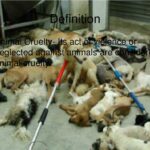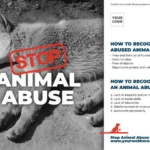The landscape of animal protection laws across the United States resembles a patchwork quilt—some states are adorned with vibrant, protective measures while others remain tattered and frayed at the edges, offering scant refuge for the voiceless. This legislative tapestry of 2025 reveals significant disparities, with certain states languishing in a dismal state of animal cruelty laws. Understanding which regions fall short is imperative for advocacy, as the welfare of countless animals hangs in the balance.
To truly appreciate the gravity of the situation, we must first understand what constitutes inadequacy in animal cruelty laws. A pitifully lax framework might permit egregious acts of violence against animals, ranging from neglect and abandonment to outright abuse. These manifestations of cruelty illuminate the shadows where animals suffer in silence. Unfortunately, certain states have yet to illuminate the dark corners of their legal landscapes, allowing cruelty to flourish under the guise of apathy.
In 2025, our analysis identifies the states with the most ineffective animal cruelty laws. We spotlight these jurisdictions not to cast blame, but to advocate for change and highlight the urgent need for reform.
1. Kentucky – A glaring example of neglect, Kentucky emerges as a formidable challenger in the realm of inadequate animal protection. The commonwealth lacks a comprehensive animal cruelty statute, leaving a gaping void that permits the mistreatment of countless creatures. While some counties have enacted local ordinances, these measures are inconsistent and often unenforced, leaving animals at the mercy of their abusers. The absence of felony-level penalties for severe cruelty reinforces a culture where animal suffering is trivialized, rendering help for vulnerable animals sporadic at best.
2. Iowa – In a state often heralded for its agricultural output, the welfare of animals frequently takes a backseat. Iowa’s laws are riddled with loopholes that shield animal abusers from accountability. The focus on agricultural interests often overshadows the necessity for robust animal protection laws. As factory farming proliferates, even instances of torment are frequently overlooked or dismissed, leaving advocates to battle a formidable wall of silence. In a place where livestock outnumber people, the need for reform is paramount, yet the inertia remains unsettling.
3. North Dakota – As the second least populous state, North Dakota reflects a rural ethos where the connection to agriculture dominates social and legislative priorities. Unfortunately, this influence extends to its animal cruelty statutes, which are disturbingly lenient. The prevailing mentality often views animals as property, yielding minimal protections against cruelty. This utilitarian perspective complicates advocacy efforts, as local communities remain entrenched in their practices, indifferent to the suffering of those outside their agrarian worldview.
4. South Dakota – Much like its northern counterpart, South Dakota also suffers from weak animal protection laws—leaving animals vulnerable in an environment that prioritizes agricultural importance. Legal penalties for acts of cruelty are inadequate, lacking the necessary teeth to deter would-be offenders. With limited public awareness surrounding animal welfare issues, change seems an uphill battle. Each instance of abuse is a reminder that the long and arduous journey towards reform is still far from complete.
5. Wyoming – In Wyoming, the sparse population contributes to an overarching lack of attention to animal welfare. The existing laws are minimal, offering little recourse for the victims of abuse. The state’s vast expanses seem to echo the plight of animals trapped in cycles of violence and neglect. Advocates find themselves navigating through a formidable labyrinth of apathy, battling against ingrained practices that prioritize tradition over compassion.
These states represent the distressing reality faced by countless animals. However, it’s essential to highlight that the narrative does not end here. Each mention of inadequacy is a call to arms. Through concerted efforts, both grassroots movements and legislative advocacy can foster change. States teetering on the brink of progress can be galvanized into action when citizens rally together for the enforcement of stronger laws.
The role of the community is quintessential; advocacy must not only focus on the legislative arena but also infiltrate public consciousness. Raising awareness through educational initiatives and campaigns can illuminate the grievous shortcomings in animal protection. Engaging with local policymakers can create a ripple effect, fostering dialogue about the importance of enacting stronger protections.
Moreover, the media plays a potent role in this fight. By bringing light to abusive situations and highlighting success stories from other states, the media can galvanize public opinion and urge lawmakers to act with conviction. Change is oftentimes precipitated by outcry, and it is the responsibility of each individual to ensure that the outcry is heard, recognized, and acted upon.
In conclusion, as we survey the disheartening landscapes of animal cruelty laws across various states in 2025, we observe not merely shortcomings. Rather, we witness the potential for transformation. With unity, advocacy, and an unwavering commitment to animal welfare, it is possible to weave a stronger, more vibrant legal framework that champions the plight of animals everywhere. The journey towards better protections is indeed fraught with challenges—but with determination and compassion, we can suture the wounds of neglect and imbue hope into the lives of countless animals waiting for their metamorphosis from suffering to salvation.








